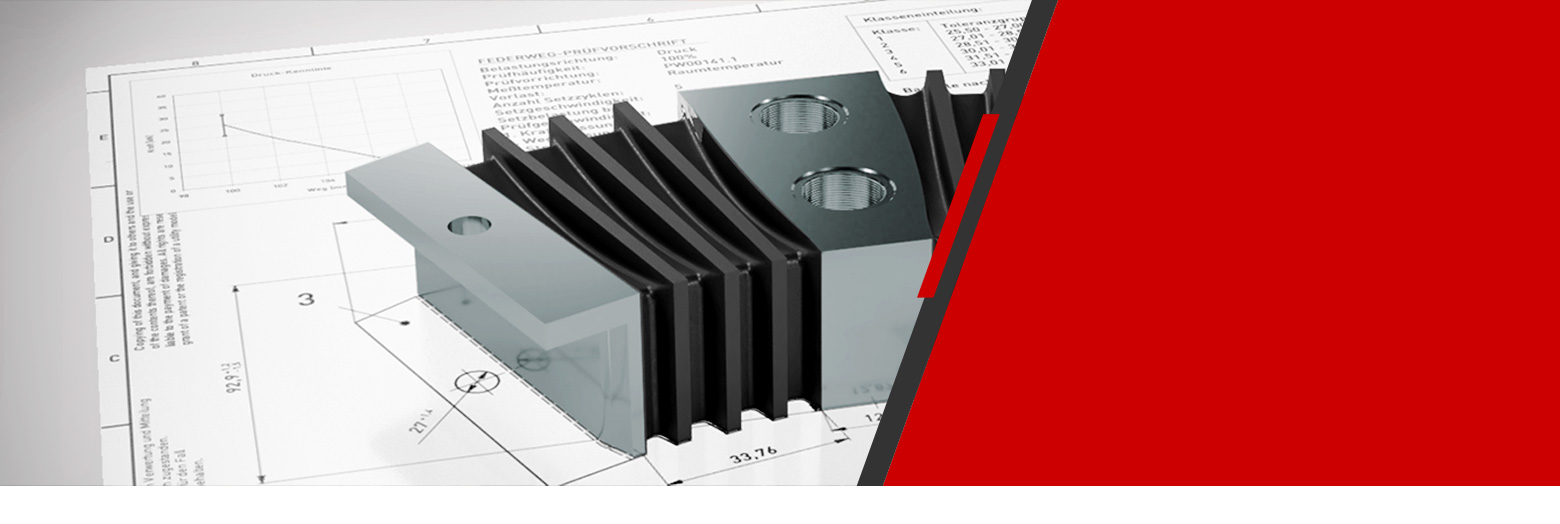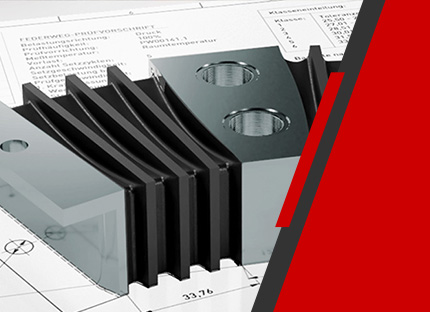RESEARCH AND DEVELOPMENT
Since its foundation in 1968, GMT has stood for innovation and progress in the field of anti-vibration technology.
Research and development are key factors for our business success. For this reason, we continuously invest in these fields.
For decades GMT has been one of the leading manufacturers of anti-vibration technology. We have set new benchmarks in this field due to applying many innovative solutions, procedures and products. Our patented solutions include push-pull-rods for suspension and mounting of fixtures in aircrafts as well as the hydro-elastomeric bearing for double-sided use in axle guiding bearings HYDRALL® and the axle shield MERP for railway vehicles.
Further examples of our innovative developments are primary spring systems ready for installation with integrated elastomer wheelset guidance bush, various types of wheel noise absorbers as well as air spring systems and transverse springs for increased driving comfort in lateral direction.
As an industrial B2B partner we provide application-oriented research and development to find solutions in close cooperation with our customers.
Until a component is deployment ready, comprehensive engineering groundwork is necessary. The basic construction is assessed in conjunction with computational strength and damage calculations to determine points with the highest stress and strain levels. GMT determines the necessary mixture-specific material data through in-house fatigue strength analysis. Our aim is to already determine the optimal design during the construction phase to achieve a safe and enduring performance of our products and to keep development periods short.
Our elastomer-mixtures are in-house developments which our chemists create according to customer-specific requirements. With a focus on excellent dynamic characteristics, a high elongation at break and good mechanical strength, we offer a wide range of versatile rubber qualities. Based on our long-term research activities we have created railway solutions which are in line with the fire protection requirements according to EN45545. These include fire resistant rubber characteristics with good strength properties as well as individual solutions for components of primary and secondary suspension being subject to high dynamic stress.
In accordance with standards and the specifications of our customers we test our products to achieve required characteristics and reliability. Test bench trials serve to ensure functionality and durability of the components in operation. To validate our products, we perform single and multi-axial operational stability tests on our hydraulic test benches. Specific creep tests furthermore allow us to forecast the height loss of our components when subjected to prolonged stress.
In combination with our industry partnerships, GMT maintains research collaborations with universities. Following rigorous internal testing and subsequent release, newly developed products as well as spare parts often undergo an operational trial phase at the customer’s site.
By determining the condition of customer’s used products and testing their residual life span we help our customers to predict the remaining useful operation time of components before they need replacing and in this way frequently achieve an extension of exchange intervals thereby reducing customer overhaul costs. Systematic collection of field data allows us to support system houses completing RAMS documents.

